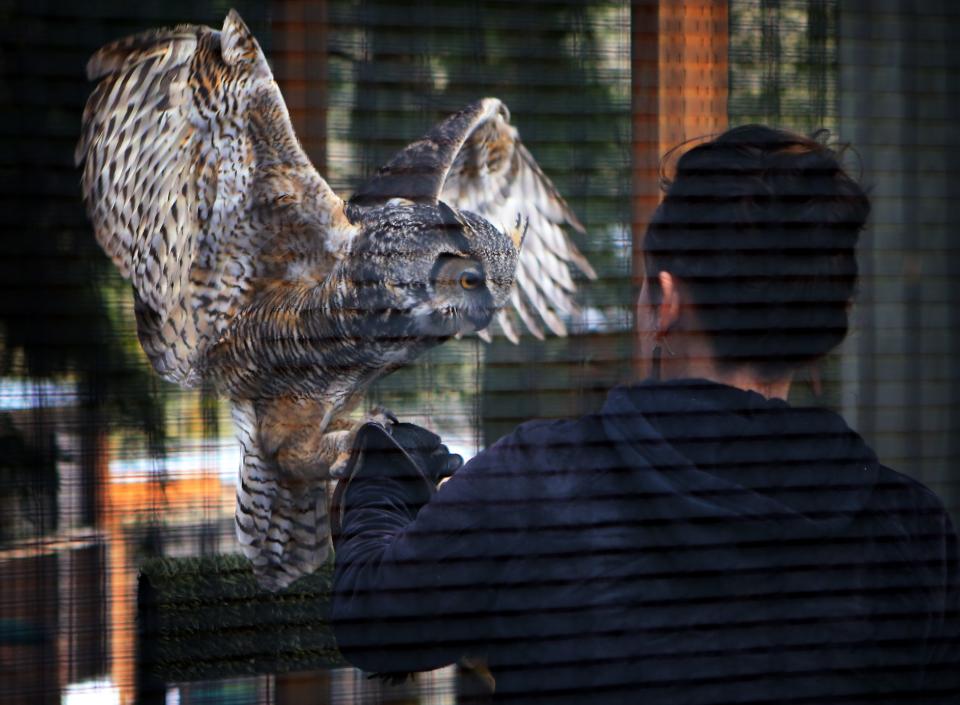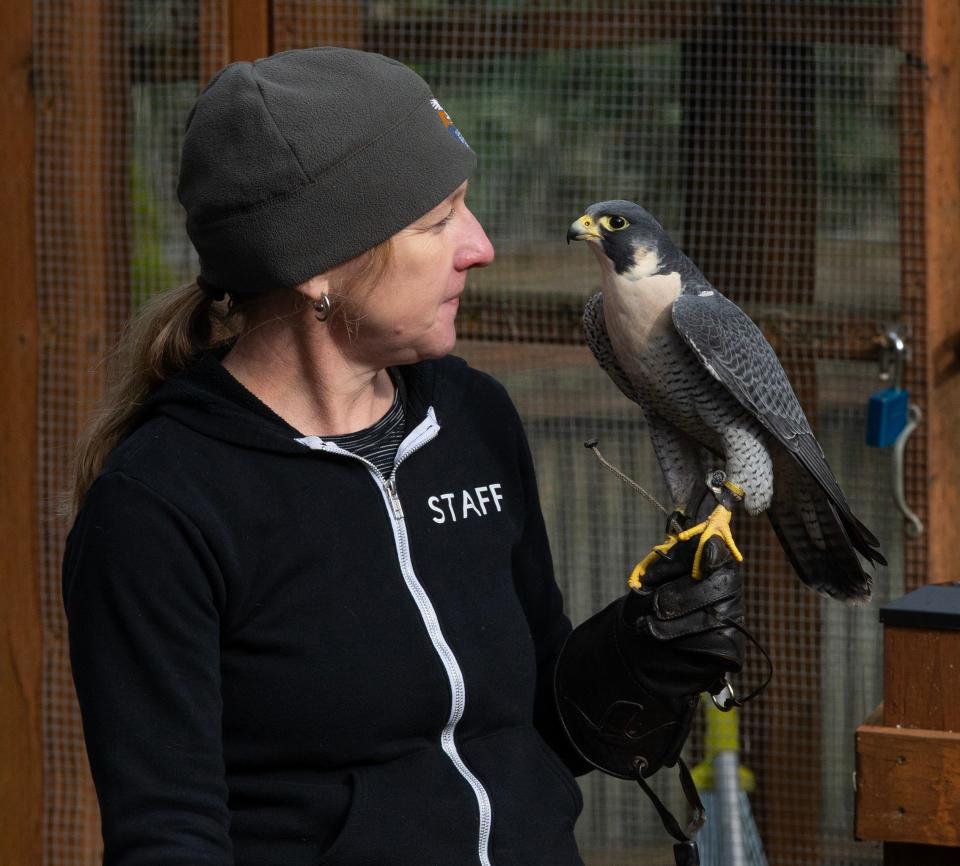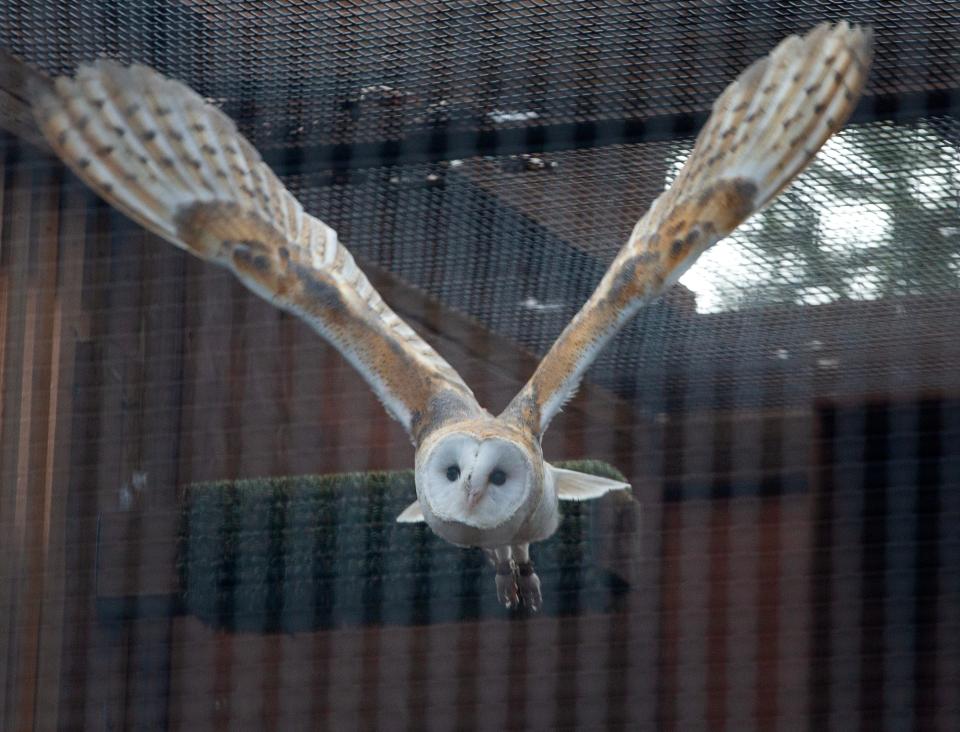Cascades Raptor Center reopens after ice storm thanks to community donations
The Cascades Raptor Center has officially reopened, following extensive damage and unsafe conditions caused by a January ice storm.
The storm caused more than $30,000 worth of damage to the center, staff estimated. Through community donations, the center was able to pass that amount easily. After further deliberation, Julie Collins, executive director of Cascades Raptor Center, said the real cost due to lack of revenue and keeping up with staff payments was probably closer to $75,000.
Collins said the nonprofit got more than 1,400 individual donations. While she didn't disclose the final dollar amount, she did say the donations were enough to fix the damage incurred by the storm, pay staff and continually operate the Wildlife Hospital despite the loss of revenue while the center was closed for nearly four weeks. Collins called the support "mind-blowing."
"It was just absolutely amazing, and to know that people cared deeply and want to see us back open again," Collins said.
Two aviaries were destroyed in the storm. The homes of Lorax the Great Horned Owl and Atticus the Bald Eagle were crushed by two large fallen Douglas fir trees. Thursday, during a soft opening for donors, volunteers and media, the two decimated exhibits could still be seen. Lorax and Atticus were both moved while their aviaries were down.

Despite the chaos of the ice storm and the scramble of staff to get the center cleared out and ready for guests, the birds are all well. Kit Lacy, bird curator at Cascades Raptor Center, said none of the birds has shown any signs of lasting stress due to the storm.
"It's just a really amazing testament to the amount of work that our training staff do and our birds, their resilience," Lacy said.
Repairs still need to be made
While most of the repairs have been completed and the center is now open to the public, there's still more to be done at Cascades Raptor Center.
Lacy pointed to lumber to the north of the two destroyed aviaries that still need to be broken down and removed. She also said one of the big ongoing projects is renovations to the Resident Care Building, where staff prepare the raptors' meals and do other tasks behind the scenes. The care building was already under renovation when the storm hit, and Lacy said it created a significant delay to the building's progress. The timing of the project made things extra difficult due to the two-week power outage, according to Lacy, but progress is being made.
In the coming months, Collins said there will likely be more trees removed and some Douglas firs could have branches removed to reduce their weight and help prevent future damage.
Additionally, the two destroyed aviaries located in the northeast corner of the center are still awaiting rebuilds. Construction on the two aviaries has not yet begun, but Collins confirmed a loose timeline, saying the hope is to have them back and fully functional this summer. She said the donations they have received have been a huge help.
"We feel because we have the funds to support us, we can buy all the lumber and other items that we need," Collins said. "We don't have to skimp on anything. We can make sure that we do it the right way, which sometimes nonprofits, when you don't have the funds, you just have to do it the best you can."
Now that the two Douglas firs that were downed have been mostly removed, staff can begin going through the rubble and determining if anything can be salvaged and reused.
Back to business
While there's still work to do, Cascades Raptor Center can now refocus on its mission: education and rehabilitation.
The Cascades Raptor Center is made up of two main areas, the Nature Center, which is open to the public, and the Wildlife Hospital, which treats 400 to 700 animals every year and is currently the only raptor-specific wildlife clinic in Oregon.

"We're really just looking forward to getting back into the business of meeting our guests and sharing these amazing birds with folks," Lacy said. "This is why we're here. That's why these amazing animals live here with us so that they can inspire folks."
Many of the raptors at the center can be found in Oregon, but there are several species from around the world, including Kaida the Saker falcon and Dmitri and Hans the Eurasian eagle-owls.
"(Historically) raptors have always held a special place with humans," Lacy said. "They were gods, they were presented as wisdom or courage, all sorts of different things. ... Across the board for so many different human cultures, raptors have always had that pull. We name our cars after them and our sports teams after them today.
"We really believe we can connect people to them. ... People realize that we're sharing this world with so many amazing creatures."

According to the center's website, the Nature Center gets 20,000 visitors per year.
The Cascades Raptor Center has 33 ambassador birds that are permanent residents, and the center welcomes new birds every year. In 2023, Lacy said, the center added five raptors to the collection. Meanwhile, other birds have been at the center for decades. Aeolus the bald eagle has been a resident for over 25 years.
As much as the 15 staff members were happy to have visitors back at the center, Lacy said many of the birds seemed excited as well.
"He's very good at this unusual job," Lacy said, gesturing to Lethe the turkey vulture, who has been at the center since 2001. "He is sitting right up front. He's wondering what we're doing."
As of Friday the Cascades Raptor Center is open to visitors Tuesday through Sunday from 10 a.m. to 4 p.m.
To learn more about visiting or donating to the center, visit www.cascadesraptorcenter.org.
Miranda Cyr reports on education for The Register-Guard. You can contact her at mcyr@registerguard.com or find her on Twitter @mirandabcyr.
This article originally appeared on Register-Guard: Cascades Raptor Center reopens following ice storm damage

